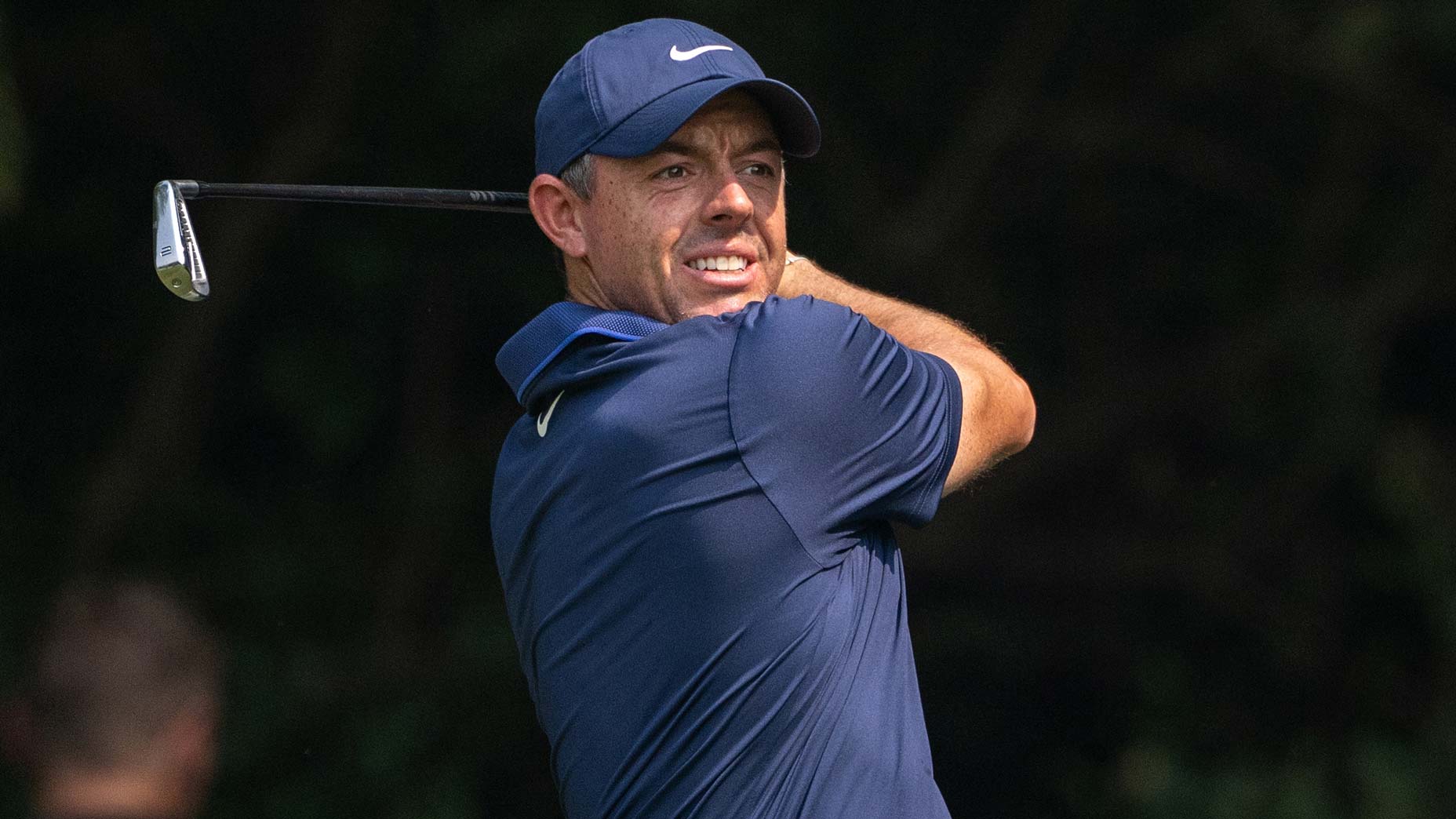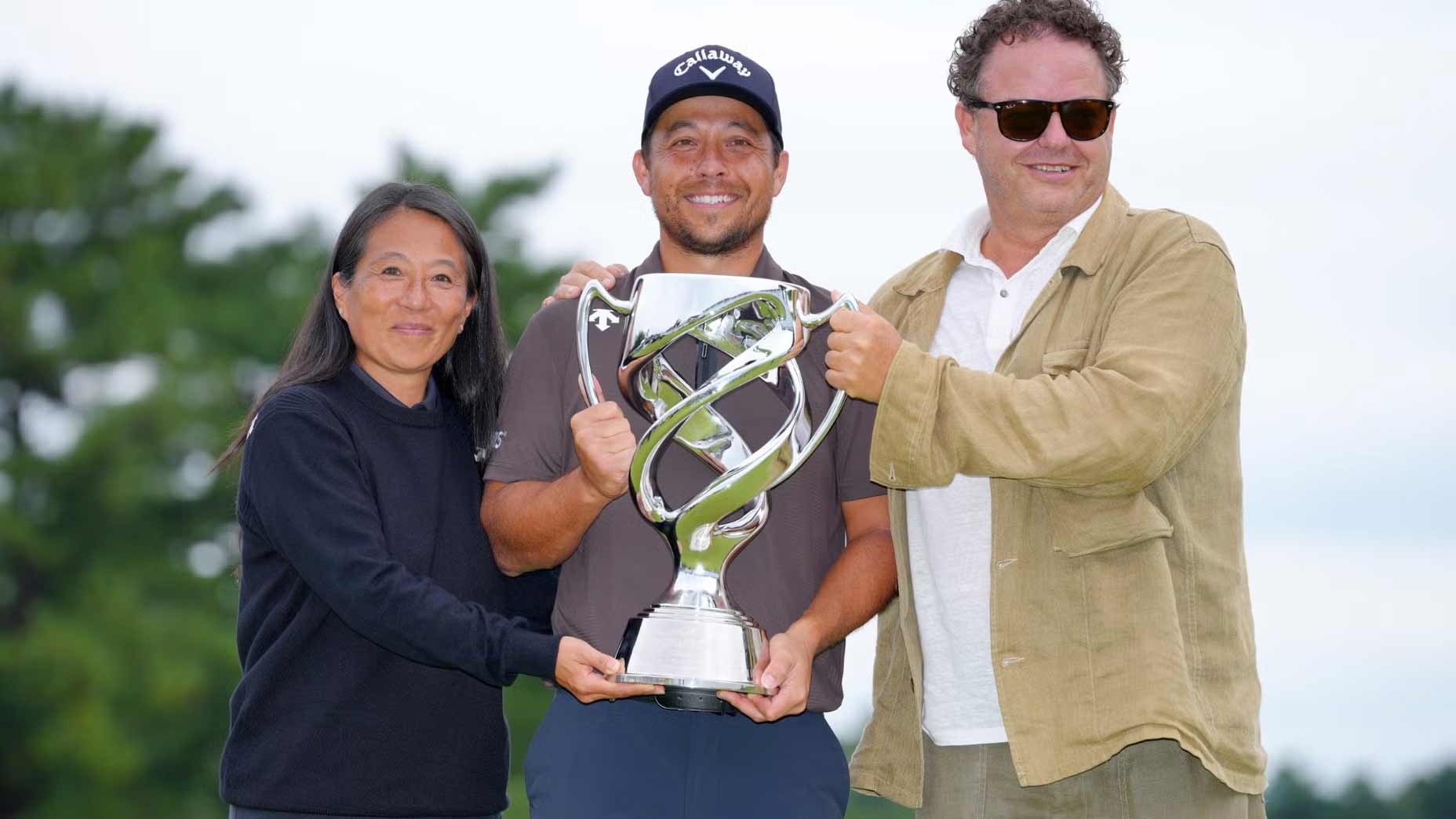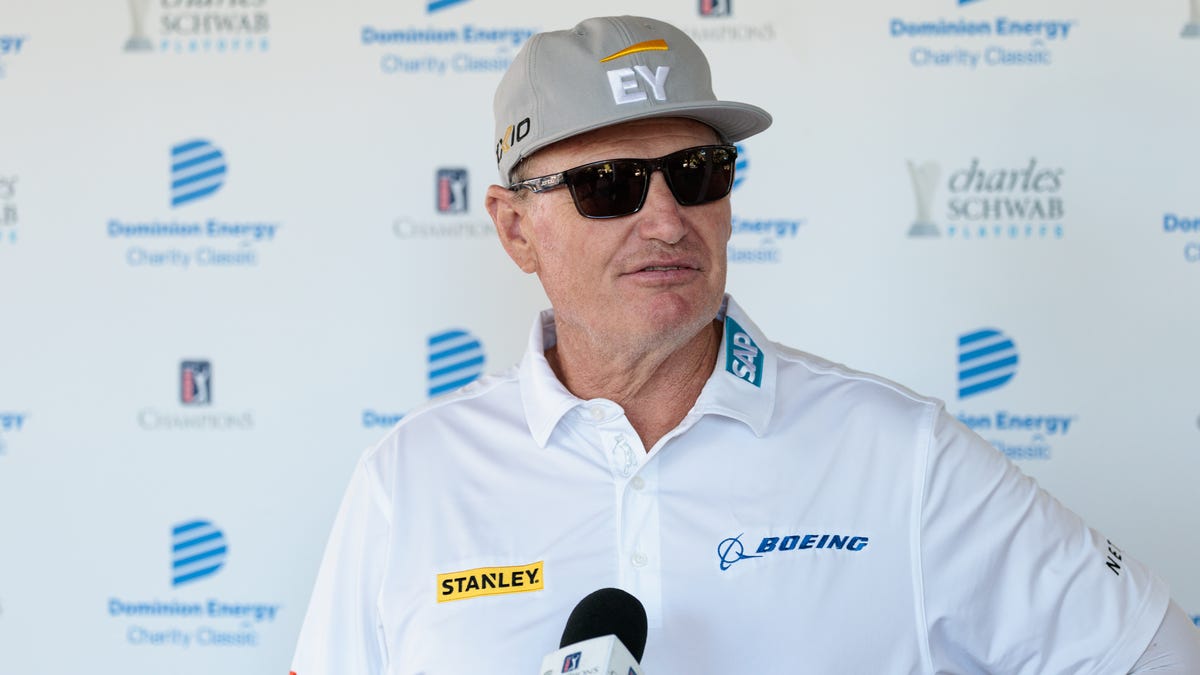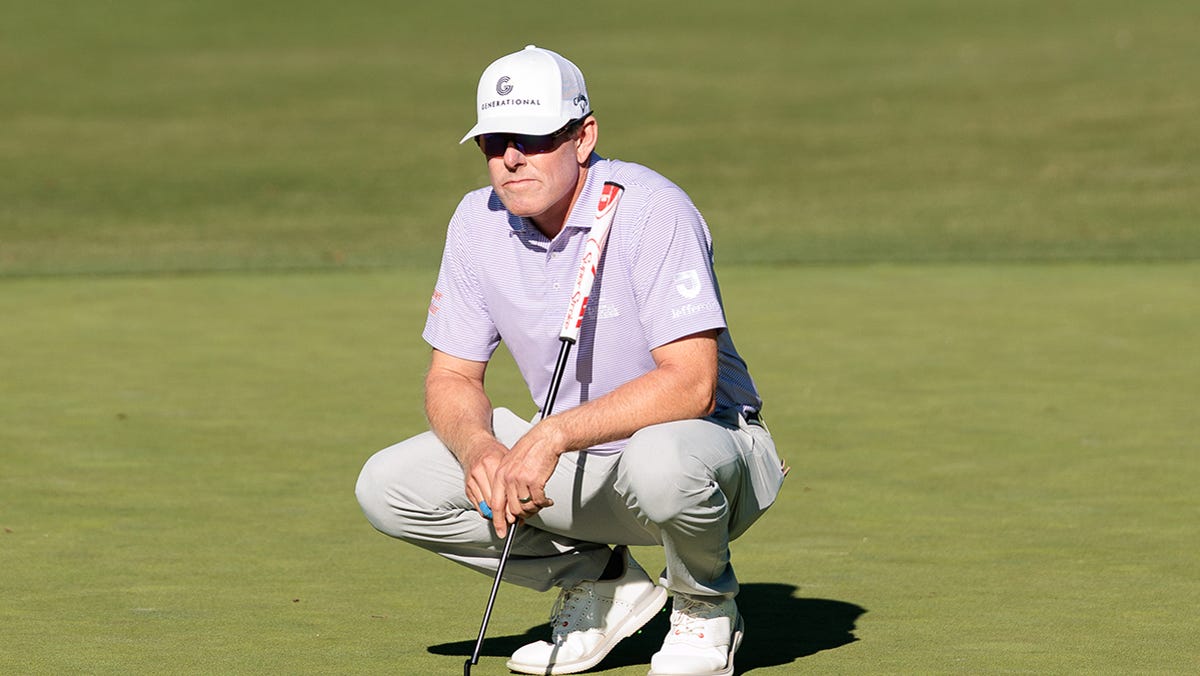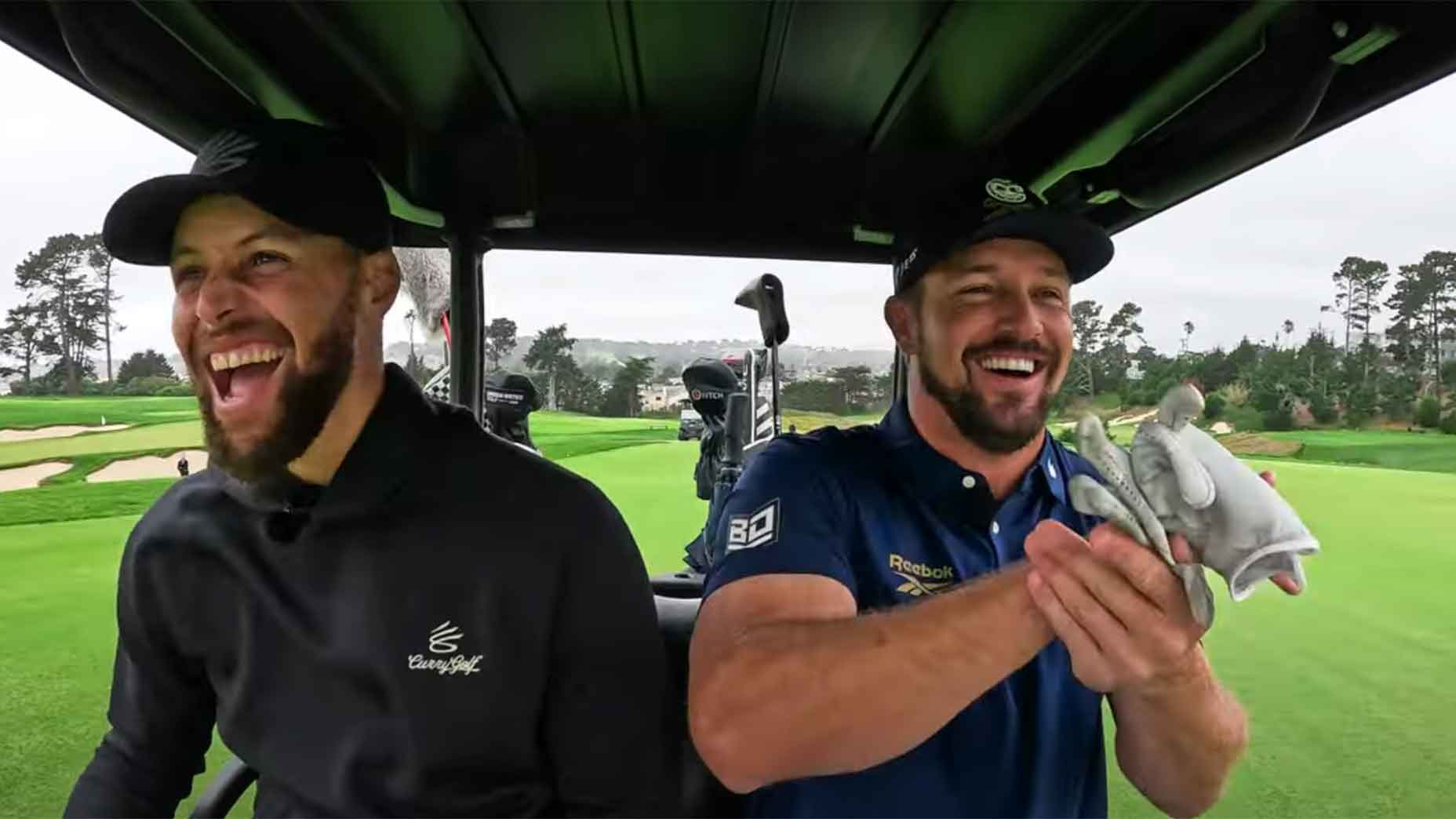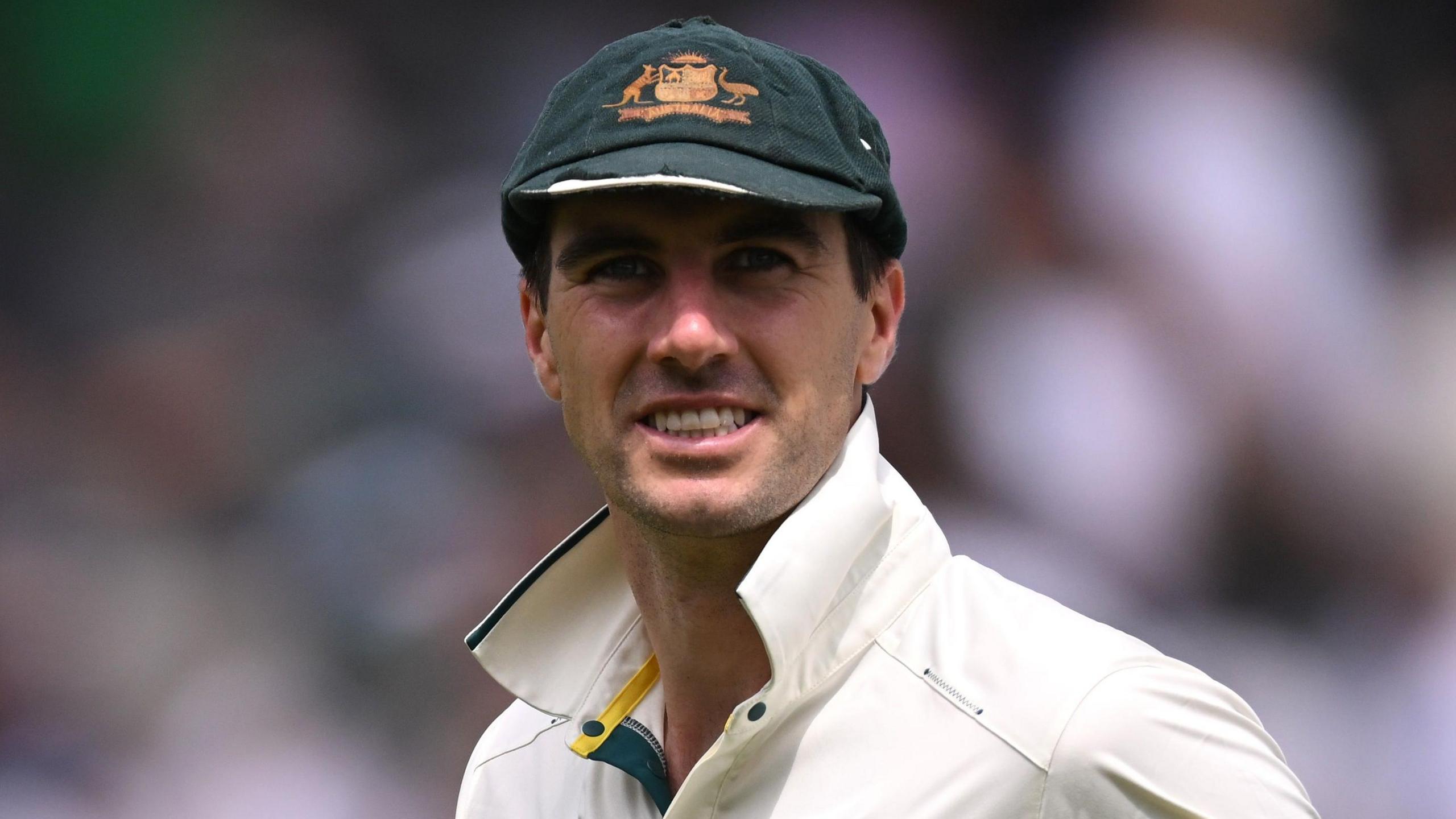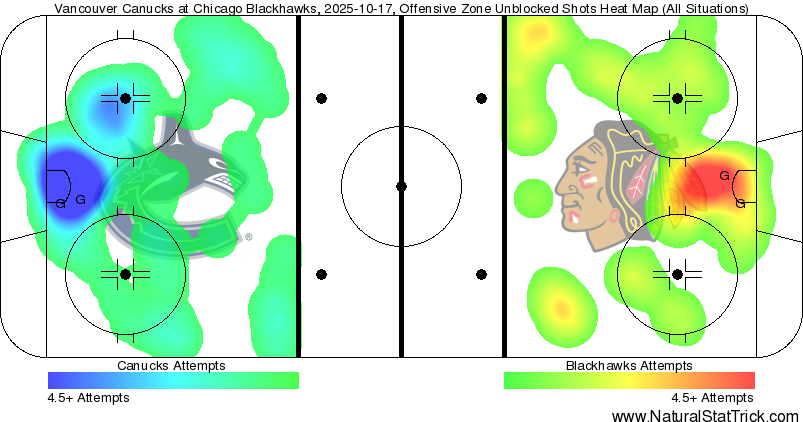When Jeffrey Kang was in college at the University of Southern California, he’d sometimes earn some extra cash by helping head coach Chris Zambri with his junior golf clinics. For Zambri, it was simple: He’d point at Kang, one of the most decorated recruits in program history, and say to the kids, “This is what it takes.”
If only Kang knew then just how much it would take.
Kang’s long and winding road to the PGA Tour culminated last Sunday in French Lick, Indiana, where the 34-year-old prodigy turned journeyman ended the Korn Ferry Tour Championship ranked 14th in points and grabbed one of 20 available cards for 2026.
“It took a lot of patience, a lot of self-talk, just believing in myself and trusting that it was all going to work out in the end. It’s been tough, but this is why we do it,” said Kang, who in the aftermath of the card ceremony was, like most everybody else, not only soaking up the moment but also in champagne and Michelob Ultra.
“I’m just really happy I stuck it out.”
What has proven an arduous journey began in Fullerton, California, just outside of Los Angeles, where it all once came easy and where Kang developed into a standout not only at Sunny Hills High but nationally. Student-athletes of Kang’s ilk – talented, smart and from the West Coast – usually matriculated to Stanford. But when Kang verbally committed to the Trojans, Zambri was so content with his Class of 2010 haul, which also included another AJGA All-American in Ramsey Sahyoun, that he didn’t care that it meant a kid by the name of Patrick Cantlay heading to crosstown-rival UCLA. Cantlay would win the Haskins Award, given to the best player in the nation, as a freshman. But Kang had done alright, too, an all-Pac-10 selection his first year and All-American honorable mention the following season, which included a playoff victory over Jordan Spieth in Hawaii. Midway through college, however, Kang’s prospects veered quickly.
“It was the lowest I’ve still ever been,” Kang said of the driver yips that debilitated him for large swaths of his final two years in school and beyond.
There were two misses: a ball that started 7 degrees right and ended up off the planet, and then the massive overcorrection. It didn’t really matter the club, either.
“And over time, it made his swing hub very unstable,” said instructor Dana Dahlquist, who worked about seven years with Kang after graduation. “I described it as a motorcycle not able to go through the turns.”
Kang never missed a round for the Trojans as a junior or senior, though that was more indicative of the state of those USC rosters. The situation got so dire for Kang that Zambri, known for meticulously testing his players during his career (he’s now the head coach of the U.S. National Development Program), exempted Kang from such practice mandates, hoping that Kang, still one of the hardest workers to come through USC, could solve things on his own. Kang nearly won in Hawaii his senior spring before Oklahoma State’s Jordan Niebrugge sped past him late, but that was a rare bright spot in an otherwise frustrating semester. The Trojans placed dead last by eight shots at the 2014 NCAA Championship at Prairie Dunes, and Kang, in his last college event, tied for 150th, beating just five players.
“A lot of guys have stepped away from the game because of this,” Kang said. “But I always knew I was going to get over the hump, and I never doubted my ability.”
With Dahlquist’s help, Kang changed his wrist conditions and how he releases the club, and eventually he went from a guy too afraid to commit to a line because he didn’t know what would “come out of the gun” to someone who had begun to not only manage his driving anxiety but reprogram his path to PGA Tour-level golf.
It took Kang a couple years to earn any status, and then he missed seven cuts and posted just one top-50 showing on PGA Tour Canada in 2016. He headed to Asia that next year, finding a home on PGA Tour China, where he won in his debut. But the pandemic shuttered that tour and left Kang again with nowhere to play. He didn’t log a world-ranked start for nearly 20 months.
“COVID derailed everything,” Kang said. “I was on the up and then I’m sidelined. I couldn’t get anywhere. Just surviving was an achievement. So, I had to restart a little bit, but looking back that’s probably the best thing that ever happened to me. It was a forced break mentally to refresh me and allow me to start from the bottom, stick to a game plan and get to where I need to be. It was a blessing in disguise.”
During that sabbatical, Kang reconnected with a high-school friend, Josh Park, an up-and-coming coach, during some mini-tour events in Arizona. They’d spend hours on end talking about golf, and eventually Park joined Kang’s stable. Along with Dahlquist and Dr. Scott Lynn, Park got Kang using the ground more effectively, specifically pushing off earlier to get the club to release earlier. His tee ball continued to improve.
“He, along with all of us, knew that if kept that driver on the hole he was supposed to play, then he would one day end up on the PGA Tour,” said Park, who started working full-time with Kang about two years ago.
Kang played mostly on PGA Tour Canada, and the temporary Forme Tour, from 2021 to 2023, notching 10 top-10s, including three runners-up. While sprinkling in a few PGA Tour starts via Monday qualifying, he medaled at the second stage of PGA Tour Q-School in 2023 and earned his KFT card for the first time last year. But 14 missed cuts in 24 starts left him No. 81 in points, and he’d begin this season with conditional status before rattling off three missed cuts in his first four events.
Then, finally, the breakthrough: A T-3 finish at the Visit Knoxville Open jumpstarted Kang’s season, and he added a pair of solo seconds late, at the NV5 Invitational and Albertsons Boise Open, to enter the KFT Finals inside the top 20. When he tied for fourth in Columbus, Ohio, he’d essentially locked up his card with two events left. Sure, he finished this season ranked No. 133 in total driving, but as the tour’s third-best putter and one of the best wedge players Park has ever seen, that was enough to get him to the PGA Tour.
Park says that Kang, armed with his USC degree, could’ve been successful in anything outside of golf, but “he never quit when most of us would have.” The sun setting on a dream day in southern Indiana, and Post Malone’s “Congratulations” blaring in the background, Kang credited people like Park and his girlfriend, Ji, for keeping him going.
Worked so hard, forgot how to vacation.
They ain’t never had the dedication.
People hatin’, say we changed and look, we made it.
Yeah, we made it.
“He persevered through some really hard times, and I just have so much respect for that,” said Zambri, who traveled to watch Kang compete in Raleigh, North Carolina, this year. “Not everyone gets to keep pursuing until they’re in their 30s. He was fortunate, but he made the most of it. And I hope it continues to work out for him. It’s not easy to go from where he was to get back in the middle of it all.
“I’m hoping he has like a Tom Lehman type of career.”
Lehman played a few seasons on the PGA Tour right out of college but with little success. It then took him nearly a decade to regain his card. What followed was an almost two-decade second stint on the PGA Tour, where he won five times, including the Open Championship and Tour Championship in 1996, and made three Ryder Cup teams.
Kang will take that.



